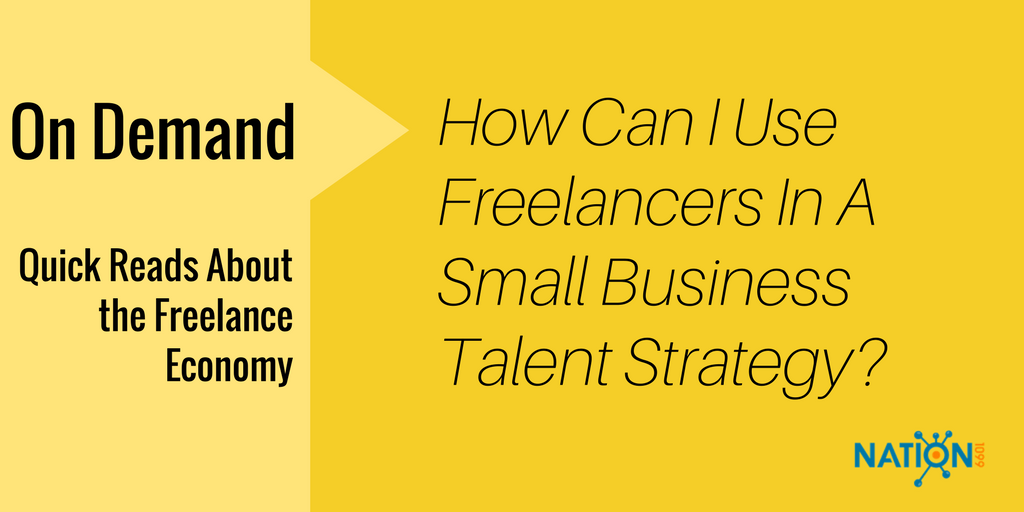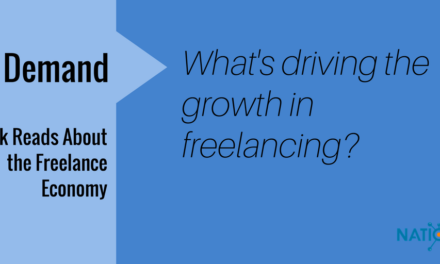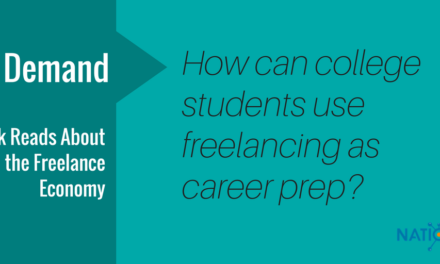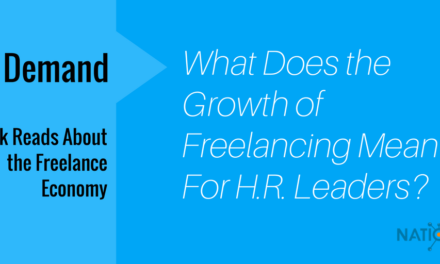Eleven percent of the workforce is full-time freelance. That group has doubled in the last ten years, and the growth projections are 3.5 percent per year. Here’s what that means for your small business talent strategy.
1. About 1 in 9 of your former employees aren’t at another company. They went solo.
Right now the biggest competition for talent isn’t another company across town. It’s self-employment. Eleven percent is probably larger than any single employer in your region.
2. Your current employees are learning the advantages of freelancing
About 25 percent of the U.S. workforce are working in traditional “role based” jobs while at the same time doing some kind of side hustle or moonlighting as independent contractors.
They might be doing it because you don’t pay them enough to get by. Or they might be doing it build their skills and experience. Both reasons are bad signs for your employee retention. The growth of freelancing is a warning sign about what’s going wrong with the talent strategy for most businesses.
3. Your employees are looking
With or without freelancing, more than half of employees say they have their eyes open for other opportunities. They want to be engaged more, they want more passion in their work, they want more flexibility and remote work options and they want a better work/life balance. The stats on employee engagement are all trending the wrong direction.
That 3.5 percent projected growth in the freelance population mentioned earlier? They will come from current employees obviously. Some of them are going to look around for another job and see that the biggest career growth area is in freelancing.
Tomorrow’s freelancer is working today in a company whose employee retention isn’t working.
4. Freelancing is a career choice, not a last resort
In the old days, freelancers may have been “between jobs,” but now 80 percent say they strongly prefer this way of working, and more than half say they wouldn’t go back to a W-2 role at any price.
If your small business talent strategy begins with a job ad, goes through the usual job boards and ends a job description, you aren’t going to reach freelancers.
Related reading: The Best Marketplaces for Specialized Consulting Gigs
5. Millennials won’t make up for boomer retirements
Those stats above on employee discontent? Increase those by about 5o percent when you survey just millennials.
Young professionals express even more dissatisfaction with work/life balance and with their W-2 based career choices. Millennials also have slightly greater participation rates in the gig economy. The same surveys show Gen Z trending even stronger on these questions.
I said above the future freelancers are current employees, but that may not be entirely true. The first generation of Nation1099 is made up of refugees from work. The next generation may be freelance native.
A small business talent strategy that is nimble businesses will take advantage of the freelance trend
If when you think “hiring” you picture “employees,” you are going to get overtaken by this trend.
But you could see this trend as a huge advantage that you can build into your small business talent strategy. Instead of seeing the growth of freelancing as shrinking your labor pool, you can see it as a hidden pool of talent that your competitors aren’t fishing in it.
The growth of freelancing means that you can draw from a prospective talent pool 11 percent larger than what your competitors are drawing from. And it means you can access the very best talent in niche areas when you need.
If you are good at sourcing, onboarding, engaging and retaining your independent contractors, you will set yourself up to win in a talent war with your competitors.
“Retain?” you might be thinking. “These are temporary people for short-term projects. Why do I care about retaining them?”
That’s an attitude that will lead to missing this strategic opportunity. Your goal should be a long-term relationship with the best talent out there. On demand talent only exists if independent contractors answers the phone when you call. They went independent because they wanted more rewarding ways of working. If you’ve treated this talent as disposable, you’re not going to get the best work out of them.
In other words, “client of choice” is the new “employer of choice.”
This might sound like a big task, but the tools you need for sourcing and managing this freelance workforce are out there. Every day a new B2B talent management platforms, payment platforms, legal services, etc. comes out that will help you work more effectively with independent contractors.
(Our gig economy news digest and trend watch is a great way to keep up with these.)
If you count all the full-time freelancers under the umbrella of employer, we would be working for the largest employer in the U.S. Working with this population will be inevitable for most businesses. The trick is to do it effectively be seeing the growth of freelancing as an opportunity for your small business rather than as a threat.










